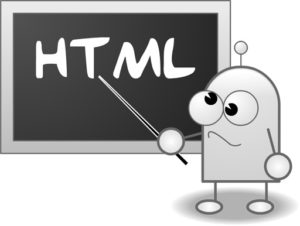It’s been about a dozen years since I first realized that there is a world-wide HTML epidemic. Although I speak about the importance of semantic markup and tweet about it often, I wish I’d written specifically about it before. Thankfully others have such as Bruce Lawson, Manuel Matuzovic, and Laura Kalbag.
Web developers overwhelmingly fail when it comes to implementing semantic HTML, whether they actually know how to or not. There are many negative ramifications of this in the areas of device interoperability, reader modes, converting to PDF and EPUB formats, SEO, graceful degradation, code consistency/maintenance, and demonstrating professionalism. But particularly web accessibility.
WebAIM Million
Recently, WebAIM published a report analyzing the accessibility of the top one million website homepages in the world, called The WebAIM Million. This is striking empirical data on how poor accessibility is and how poor the quality of HTML is on the Web. For example, here are some figures from the study.
- There was an average of 59.6 [accessibility] errors per page.
- 97.8% of home pages had detectable WCAG 2 failures.
- 5 of the top 6 issues were due to solely to improper HTML (missing alternative text for images, empty links, missing form input labels, missing document language, empty buttons).
- 2,099,665 layout tables were detected compared to only 113,737 data tables (note that tables are for data, not layout).
- On average, home pages had 36 distinct instances of text with insufficient contrast.
This is obviously bad. And, it’s important to point out that the study was done using an automated tool, which is capable of detecting only a portion of actual accessibility issues/errors. I estimate that the amount of issues would at least double or even triple if full audits were done.
Also, as a result of web developers’ poor HTML implementation, accessibility consultants are increasingly required to teach HTML to web developers rather than address “actual” accessibility issues.

Resolving the HTML Epidemic
This is obviously a huge problem that must be addressed. What can we do to help resolve this HTML epidemic?
Digital accessibility must be considered when hiring and training employees. Accessibility must be considered when creating a web-based product. Accessibility must be a part of ongoing training for web professionals. Accessibility needs to be taught in education.
An organization called Teach Access (@teachaccess) is helping in some of these areas. Teach Access is a group of tech companies (including Apple, Google, LinkedIn, Adobe, and Microsoft) which is preparing designers, engineers and researchers to think and build inclusively
. They have several initiatives including Faculty Grants and a web accessibility tutorial. And another way to fight the good fight for HTML semantics and accessibility is to become a member of Teach Access.
Teach Access is in partnership with PEAT (Partnership on Employment and Accessible Technology) which is a program funded by the Office of Disability Employment Policy, U.S. Department of Labor.

If you’re involved in education, please reach out to teachers and professors about Teach Access and about digital accessibility in general. HTML and web design are often part of computer science, software engineering, and mass media, advertising, and news programs. You can also offer to give a guest lecture.
If you have further ideas on how to improve the use of HTML semantics (and web accessibility), please leave in a comment on this post.
Directly Related Articles
- Fighting uphill, by Eric Bailey @ericwbailey
- The web web broke, by Ethan Marcotte @Beep
- Perpetuating Harm, by Winston Hearn @suchwinston
- We are actively destroying the web by Chris Ferdinandi @ChrisFerdinandi
- The Accessible Technology Skills Gap, by PEAT @PEATWorks
More Related Articles
- The Great Divide, by @ChrisCoyier
- HTML, CSS and our vanishing industry entry points, by @RachelAndrew
- Accessibility: Back to the Future (video presentation), by Bruce Lawson @BruceL
- Websites & accessibility: invest in education, by @RianRietveld
Related Tweets
“The web industry has collectively exercised its power to state that disabled people do not belong here.” Perpetuating Harm – https://t.co/Gb0bsIvRJb by @suchwinston. If the results of our Million report are discouraging to you, read this – then go do something about it!
— WebAIM (@webaim) March 14, 2019
The WebAIM Million – an in-depth accessibility analysis of 1,000,000 web site home pages. Full report at https://t.co/iP1P0zyA55 Blog post/summary at https://t.co/OYh4mfxu1B This is an incredible amount of data that show we still have a lot of work to do!
— WebAIM (@webaim) February 27, 2019
“Home pages with ARIA present averaged 11.2 more detectable errors than pages without ARIA.”
First rule of ARIA: If you can use native HTML with the semantics and behaviour you require already built in then do so.https://t.co/ozNfQ0ftj2
— Zoë Bijl (@ZoeBijl) February 28, 2019
Interesting stat: Pages with at least one non-broken "skip" link present averaged 10.4 fewer errors than those without a "skip" link. https://t.co/ZGxEeSaAkf Unfortunately skip-links often broken. #a11y
— Web Axe (@webaxe) March 7, 2019
"If we change the power structures so that previously excluded people are present in them, we reduce the chances that power will be used to harm specific groups of people." Such a clear, eloquent explanation of why diversity and inclusion in hiring is so critical. #CSUNATC19 https://t.co/YDHtMq5Ka6
— Jamie Teh (@jcsteh) March 15, 2019
"59% of the 3.4 million form inputs identified were unlabeled" – The WebAIM Millionhttps://t.co/ZWmTLwLJvd#Accessibility #A11Y #WebDev #WebDevelopment
— deconspray (@deconspray) March 1, 2019
A huge problem. #Accessibility needs to be taught in tech education. TechAccess is helping: https://t.co/shjWMPDjge #edu #tech #a11y https://t.co/2teXSDBN6L
— Dennis Lembrée (@dennisl) March 16, 2019

5 replies on “About the HTML Epidemic, WebAIM “Million” Report, and Teach Access”
Speaking as a former educator who always taught semantic HTML as foundational knowledge, I suspect that students who get instruction in how to use a tool – say WordPress, for example – miss that basic background in the importance of semantic HTML.
[…] About the HTML Epidemic, WebAIM “Million” Report, and Teach Access […]
[…] wrote about the first report and related issues last year — About the HTML Epidemic, WebAIM “Million” Report, and Teach Access (March […]
[…] wrote about the first report and related issues last year — About the HTML Epidemic, WebAIM “Million” Report, and Teach Access (March […]
[…] wrote in regards to the first report and associated points final yr — About the HTML Epidemic, WebAIM “Million” Report, and Teach Access (March […]